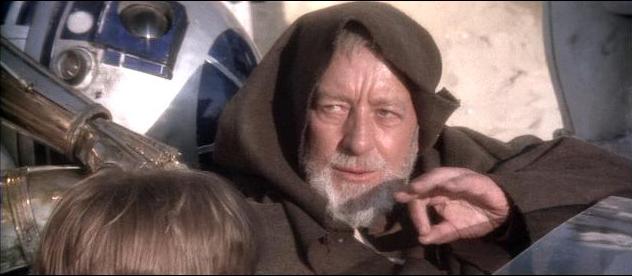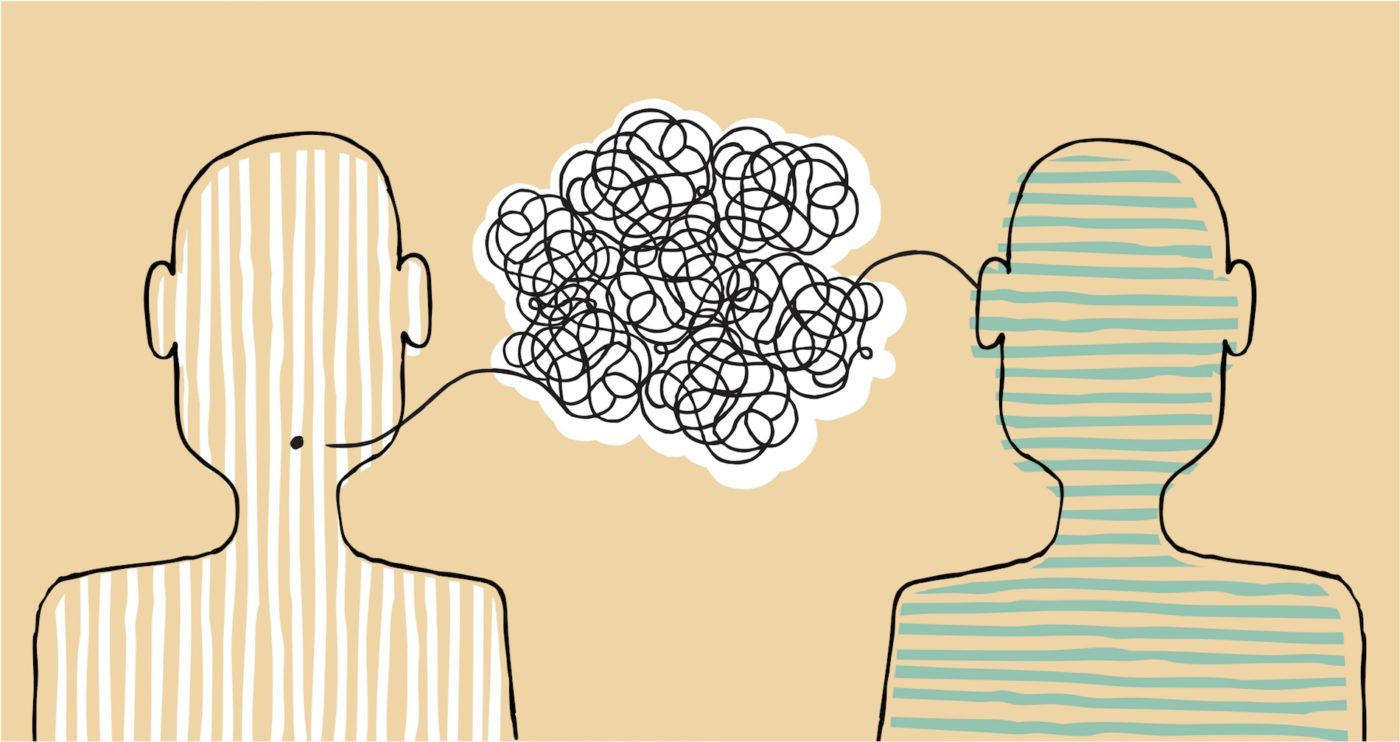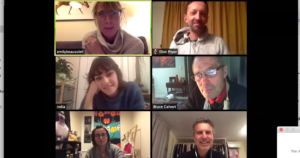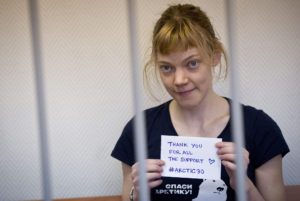You need not have watched the first U.S. presidential debate on October 3rd to know what happened. Mitt Romney won the debate in the eyes of most that watched. He succeeded, in part, by creating a narrative, telling stories, and using a strong sense of empathy to connect with citizens. The power of empathy in Governor Romney’s debate performance (and the lack of it displayed by President Obama) has been declared significant enough to perhaps turn Romney’s campaign from a languishing also-ran to a possible winner.
The October 3rd debate served as a case study in the ability of stories to establish empathy. The debate showed how empathy is more valuable than policy proposals in campaigns. While Romney was busy creating empathy, President Obama was falling back on complex policy nuance and factual details. Fine for a meeting department heads. A fail in a nationally televised debate.
But why do data and policy-oriented arguments fail to persuade the opposition? Because they are typically devoid of empathy.
When data, facts and logic fail to shake loose a change in public opinion or support for legislation we turn increasingly to storytelling. We use blog posts, videos, books, and more. We ask supporters and those impacted by these issues to “share your story.”
As communicators, we know stories are important. But it is empathy that gives stories their power in advocacy and campaign communications. In the first debate, Mitt Romney didn’t show up to tell stories. His goal was to establish empathy. He has long been faulted by supporters for displaying little, if any, empathy.
Romney’s stories were a means, not an ends. It is empathy we are after, not just good stories.
The Force of Empathy: These aren’t the droids you’re looking for
Empathy is the ability of a story to put us in another place or time — or even allow us to see the world through the eyes of another.
In his book A Whole New Mind, Daniel H. Pink defines empathy as:
…the ability to imagine yourself in someone else’s position and to intuit what the person is feeling.
Pink goes on to describe how empathy allows one to see the other side of an argument — one of advocacy communication’s chief purposes.
The role of empathy is too often misplaced in our storytelling. Our first instinct as advocates is to get the reader or viewer to empathize with our point of view. The mission of most advocacy stories might be something like: “The story needs to get them to understand that we are right.”
A good story transports you, the reader, into the character’s world. There, empathy lets you see the world through his or her eyes. As advocate, your goal is to get people to agree with you. As storyteller, your goal is different. You want the reader to become part of the world of your issues and thereby understand the world differently.
Elaine Scarry is a professor of English and American Literature and Language at Harvard University. Recently, while commenting on Daniel Pinker’s book The Better Angels of our Nature: Why Violence Has Declined, Scarry wrote about the role of empathy in literature and its potential role in changing social behavior over time. Prof. Scarry was commenting on
By “empathy” Hunt and Pinker—rightly in my view—mean not the capacity of literature to make us feel compassion for a fictional being (though literature certainly does this), but rather the capacity of literature to exercise and reinforce our recognition that there are other points of view in the world, and to make this recognition a powerful mental habit. If this recognition occurs in a large enough population, then a law against injuring others can be passed, after which the prohibition it expresses becomes freestanding and independent of sensibility.
Empathy is a strong force in literature. One that makes us recognize alternate worldviews. Empathy is not about sympathy for a character but a more complete understanding of the character’s life. This is power that can change behavior — far more significant than compassion.
Perhaps Obi Wan Kenobi displayed the greatest (and most direct) use of empathy in storytelling. In Star Wars, Obi Wan uses the Force (the science fiction term for empathy?) to make stormtroopers see the world through Obi Wan’s eyes and realize that, indeed, these were not the droids they were looking for.

Use Empathy Well, Young Skywalker
In Lisa Simpson for Nonprofits: What Science Can Teach You About Fundraising, Marketing and Making Social Change, the authors (Alia McKee, Mark Rovner and Katya Andresen) point out that giving is irrational. People donate more out of feeling than thinking.
More interesting (but not surprising if you’re a fundraiser), is that giving makes people happy. Thinking a lot about something does not, in my experience, make people happy.
The urge to give is not simply people acting irrationally. What if it is simply an empathic response to a good story or video that connects the potential donor to the organization?
Fortunately, we don’t need to rely on “the Force” to create empathy. A good story with proper dramatic arc is a start.
In a recent video for the Future of Storytelling conference, Dr. Paul Zak (a professor of neuroeconomics at Claremont Graduate University) describes how people were presented with a video telling the story of a father and his young son, who is dying from cancer. Viewers empathized with the characters in the video and were more likely to make a charitable donation after watching the video.
In looking for biological explanations for empathy, Dr. Zak found increased levels of cortisol and oxytocin in the blood of those watching the video. Cortisol correlates with distress and focuses the mind’s attention. Oxytocin is a chemical associated with care, connection and empathy. The study also scanned brain activity while watching the video and found that areas of the mind associated with understanding what others are doing were highly active, as were areas rich in oxytocin receptors.
Dr. Zak notes that viewers were asked to watch several videos about the boy and his father. Only those videos with a dramatic story arc produced cortisol and oxytocin in the viewer. Simply watching a video of a boy and his father walk around a zoo, for instance, produced no change in blood chemistry and no empathy.
In other words, powerful stories with dramatic arcs can create chemical reactions in the reader/viewer that increase their empathy. In advocacy, a strong story can help connect characters (and issues) to the viewer.
Dramatic structure is a storytelling arc described by Gustav Freytag and includes exposition, rising action, climax, fulfilling action and denoument. This structure helps the reader (or viewer) focus their mind, forget what they’re doing, and join in the story. They emerge at the end, hopefully, not with your advocacy ask in mind but with a view of the world that changes their behavior.
The moral of the story in Star Wars is that good, against all odds and weakened by youth and few resources, can triumph over evil by being clever and more persistent. Nobody, aside from a movie critic, walked out of the theater talking about that but they all felt the inspiration and power of that moral.
If empathy is the secret sauce of storytelling then the goal of advocacy stories is not to have the reader or viewer agree with you but simply to connect with your worldview. Mitt Romney’s goal in establishing empathy in the first debate was not to get people to agree with him. It’s nice if they do but the goal is to let people feel like he understands them and their world. For many, especially the undecided, their opinion (and vote) is based on comfort and confidence, not agreement.
As advocacy communicators, we can also use stories to create empathy and create or strengthen connections. Our campaign organizers can then engage people through that connection, exposing them to more stories and maybe getting them to take actions and actively support policies that create a healthier climate.
This post originally appeared in ClimateAccess.
Categories:
narrative, framing and storytelling



